Buy Stubbs the Zombie in Rebel Without A Pulse
The tail end of 2005 saw the release of Stubbs the Zombie in Rebel Without A Pulse. It may have arrived just as the Xbox 360 was set to release, but it also came out before the newfound zombie craze kicked in. It became a cult hit due to its unusual premise, and it became something of a calling card when some of its creators wanted to get funding for a similar game, Ray's The Dead. For those who never got a chance to play this, Aspyr is remastering the game for multiple platforms.
Stubbs the Zombie in Rebel Without A Pulse is set in 1959, when the town of Punchbowl, Pennsylvania, is set for its grand opening. Founded by the billionaire Andrew Monday, the town is meant to be a beacon for all other cities; it's a glimpse of the future with crime-free streets, robots performing menial tasks, and flying cars. Just as everything seemed to be going according to plan, a zombie rises from the grounds of the local park. You play as that zombie, and while your initial goal is to find the woman you're infatuated with, your ultimate mission is to wreck the town.
The general tone of the story is silliness, but its execution feels rather staggered. There are a few genuinely humorous bits, like the scene near the beginning where a few cops give up when confronted by a small group of zombies. Otherwise, most of the jokes fall flat, since you can see the punchline coming from miles away. As for the execution, there are moments that go unexplained, such as how your zombie traveled from a greenhouse to the middle of the city or why a detour to a water dam was necessary. Add that to the abrupt transitions between some cut scene triggers, and you end up with a game that feels disjointed.
Initially, playing as a zombie doesn't afford you too many abilities. You've got a basic slash attack that can turn into a simple combo if you mash on the attack button enough times. Your walking speed is decent, as you aren't as swift as a zombie from "World War Z" or "28 Days Later," but your shamble is faster than in a classic George Romero film. You can also jump and crouch, which might not seem like a big deal, but it means that you're more versatile than most zombies.
Of course, the most important move in your arsenal is the ability to eat brains from the living. Doing this against anyone without a helmet nets you some health if you didn't want to stand around and wait for health to regenerate. Eating brains is also useful for gaining energy to perform a variety of other moves. You start with the ability to fart over a wide radius, stunning everyone in the vicinity. Later on, you can use a part of your guts as a grenade that detonates at your leisure, or you can use your head as an explosive bowling ball to roll toward foes. You can also throw your hand out to scour the area ahead of you and take control of other people, giving you the ability to use guns if your host wields them. For foes with helmets, you can rip off their arm instead, giving you some limited chances to kill enemies with one hit.
Those abilities may be good, but you'll likely stick with biting and swiping at humans since that's the quickest way to deal with bunches of enemies. That's because dispatching enemies this way makes them turn into zombies, and while they make for great distractions and meat shields, the newborn zombies can also attack others and turn those victims into zombies. On paper, this is perfect for creating chaos, since you're creating a nice little horde to take care of everything for you. In practice, though, it only seems to work if enemies are nearby and you're in a wide-open area. Have enemies far away from you, or if you start attacking in narrow hallways, and the turned zombies simply stand around, forcing you to push them to do anything. If you aren't pushing them into action, you're stopping every few feet to look back and whistle to them so they'll pay attention for a few seconds. Their slow movement also seems to equal short attention spans. As a result, the benefits from taking the time to create a horde don't pan out most of the time.
If you can live with that setback, you'll find the overall experience to be enjoyable enough. You get a few breaks from shambling by riding around in tanks and tractors, which seems strange until you realize that this was built on the original Halo engine. Checkpoints are quite frequent, and returning from death is done without loading screens. In fact, the lack of loading screens is a big improvement over the original, so everything flows rather well. The one thing that remains annoying is how easily you can get lost in some places; no clear markers are shown to the player until after 20 minutes of wandering around for a location marker or a trigger point to appear.
There's a decent amount to do once you've gone through the roughly six-hour campaign. Playing through the game again gives you a new task in the form of hidden hippo heads, and collecting them unlocks developer commentary bits, something that remains a rarity now as it did back then. Split-screen co-op is also available, and while it doesn't change the cut scenes, since they always show one player instead of two, the extra hands make for a more chaotic experience from beginning to end.
The presentation is equal parts good and mystifying. The sound is one area that fits this perfectly; gunshots sound weak, but the more period-accurate sci-fi weapons, like ray guns, sound powerful and on-point. The cries of enemies do a great job of being hammy and humorous enough for a B movie, but the humor wears out its welcome when you hear those same lines get repeated in a short time period. The audio balance for these voices is erratic, as some come out rather softly and others come in quite loudly, with the distance to camera not making much of a difference. Music is nonexistent for most of the game, and the few moments when it does appear don't build much of a mood, making the tracks appear random when they do pop up. Interestingly, the game features licensed tracks of artists from 2005 covering music from the 1950s. The idea is great, and the songs are well done, but it feels like a waste since only some of the songs appear during a dance-off with the police chief, and only the first verse is used.
Aside from the resolution bump, not much has been done to touch up the original Xbox-era graphics. The environments look fine if you don't pay attention to the low-resolution textures. The characters still look rather good, but their animations feel stunted, and the mouth animations look quite terrible by today's standards. Even though the game is two generations old by now, it's concerning that the Switch port maxes out at 30fps and exhibits slowdown during the busy sequences. Perhaps the most noticeable issue is that the game constantly runs with a pea soup green filter over it. The lasting effect feels like it's a bug, especially when you see other in-game cut scenes with the correct colors, but old videos of the PC version show that this is actually normal, making it a terrible aesthetic choice since everything blends together too well. Some enemies can get in free hits since you'll barely notice them in some areas.
If you're looking at Stubbs the Zombie in Rebel Without A Pulse without the benefit of nostalgia, the experience is rather clunky. The concept is great, but the flow feels random due to the awkward level transitions and situations. The mechanics are inventive, but things like terrible AI on both sides keep the game from reaching its full potential. Although the presentation shows how good the graphics of the original Xbox look today, some odd presentation choices feel like bugs. If you have fond memories of the original PC and Xbox release, then it's fine to check out the Switch port, but those who are new to the game may want to temper expectations or wait for a sale.
Score: 6.0/10
More articles about Stubbs the Zombie in Rebel Without a Pulse


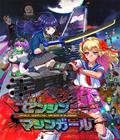
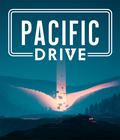

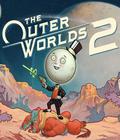

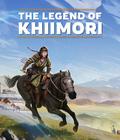



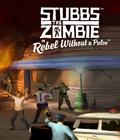 Stubbs the Zombie In Rebel Without a Pulse puts players in control of a wisecracking zombie named Stubbs, who takes on an ultra-modern city of the future using nothing but his own carcass and the weapons of his possessed enemies.
Stubbs the Zombie In Rebel Without a Pulse puts players in control of a wisecracking zombie named Stubbs, who takes on an ultra-modern city of the future using nothing but his own carcass and the weapons of his possessed enemies.



















